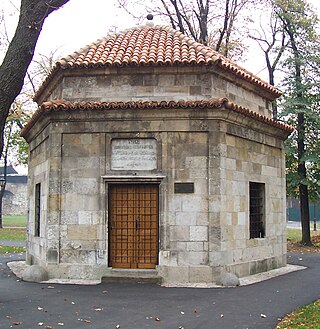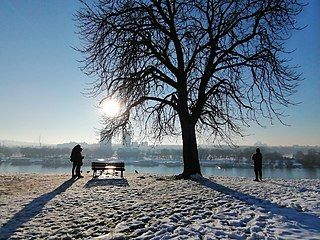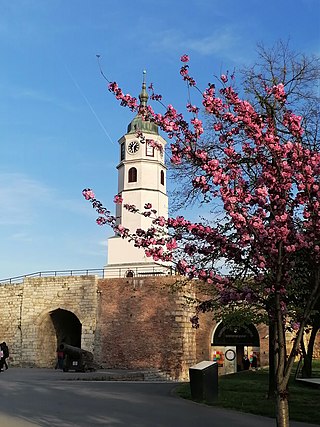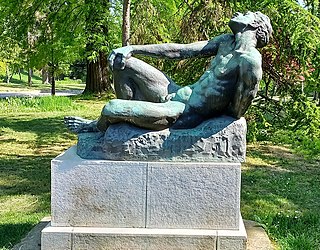Self-guided Sightseeing Tour #3 in Belgrade, Serbia
Legend
Guided Free Walking Tours
Book free guided walking tours in Belgrade.
Guided Sightseeing Tours
Book guided sightseeing tours and activities in Belgrade.
Tour Facts
5.1 km
227 m
Experience Belgrade in Serbia in a whole new way with our free self-guided sightseeing tour. This site not only offers you practical information and insider tips, but also a rich variety of activities and sights you shouldn't miss. Whether you love art and culture, want to explore historical sites or simply want to experience the vibrant atmosphere of a lively city - you'll find everything you need for your personal adventure here.
Activities in BelgradeIndividual Sights in BelgradeSight 1: Dark Gate
The Dark Gate or Karanlik Kapusi is one of the many gates on the Belgrade Fortress, on the Sava side of the Lower Town, in the direction of the southern approach to the Fortress. The gate and the surrounding complex were significantly renovated between 2007 and 2008.
Sight 2: Japanese Fountain
The Japanese fountain was erected at the end of a large promenade in Kalemegdan in August 2010. The initiative to build a symbol of friendship between the two peoples was launched by the newspaper Blic in July 2008 as a sign of gratitude to the Japanese people for the donations received by the city of Belgrade.
Sight 3: King Gate
The King Gate is one of the many gates on the Belgrade Fortress, built in its entirety with the neighboring fortifications in the southwestern inner walls, at the opposite end of the Despot's Gate. A short staircase leads to the gate that passes by the Roman well. It is connected to the rest of the city by a bridge. It was built around 1725 Once the shortest connection between the Sava coast and fortified Belgrade, today, an indispensable part of Belgrade's tourist offer.
Sight 4: Roman Well
Get Ticket*The Roman well at Kalemegdan is a fortress installation or fortress garrison (public) well of narrow profile and great depth, dug into the rocky ground below the plateau of the Upper Town, the ancient Belgrade Fortress, with a masonry staircase on two passing helicoid strips.
Sight 5: The Victor

Pobednik is a monument in the Upper Town of the Belgrade Fortress, built to commemorate Serbia's victory over the Ottoman and Austro-Hungarian empires during the Balkan Wars and the First World War. Cast in 1913, erected in 1928, and standing at 14 metres (46 ft) high, it is one of the most famous works of Ivan Meštrović. It is also one of the most visited tourist attractions in Belgrade and one of its most recognizable landmarks.
Sight 6: Damat Ali Pasha Turbe
Damat Ali-Paša's Turbeh is an Ottoman mausoleum erected in 1784 in Belgrade, Serbia. It held the body of the vizier Silahdar Damat Ali Pasha. The building is situated in the Upper Town of the Belgrade Fortress. Along with Sheik Mustafa's Tomb, this monument represents one of the only remaining examples of Islamic funerary architecture in Belgrade.
Sight 7: Belgrade Fortress
The Belgrade Fortress, consists of the old citadel and Kalemegdan Park on the confluence of the Sava and Danube rivers, in an urban area of modern Belgrade, Serbia. Located in Belgrade's municipality of Stari Grad, the fortress constitutes the specific historical core of the city. As one of the most important representatives of Belgrade's cultural heritage, it was originally protected right after World War II, among the first officially declared cultural monuments in Serbia. The fortress was declared a Monument of Culture of Exceptional Importance in 1979, and is protected by the Republic of Serbia. It is the most visited tourist attraction in Belgrade, with Skadarlija being the second. Since the admission is free, it is estimated that the total number of visitors is over 2 million yearly.
Sight 8: Kalemegdan
The Kalemegdan Park, or simply Kalemegdan is the largest park and the most important historical monument in Belgrade. It is located on a 125-metre-high (410 ft) cliff, at the junction of the River Sava and the Danube.
Sight 9: Sahat Gate
The Clock Gate is one of the many on the Belgrade Fortress, and the main entrance to the Upper Town, which, together with the Clock Tower, is one of the most important and best-preserved cultural and historical symbols of the Upper Town.
Sight 10: Унутрашња Стамбол капија

The Inner Stambol Gate is one of the many gates on the Belgrade Fortress, built in its entirety with the neighboring fortifications. It is one of the southeastern gates in the outer walls, connected by a wooden bridge to the Sahat Gate. It is also connected by an earthen bridge to the outer raveline where the road forks: on the left is the Outer Stambol Gate, and on the right is Karadjordjeva. The inner Stambol Gate was built around 1750 and was named after Istanbul (Stambol) because it was located in an extension of the Constantinople Road.
Sight 11: Gallery of the Natural History Museum

The Museum of Natural History is a museum located in Belgrade, Serbia. It is one of the oldest specialized national institutions in Serbia, and is the only museum of this type in Serbia.
Sight 12: Спољна Стамбол капија
The Stambol Gate was one of the four former city gates of Belgrade, the capital of Serbia, which allowed access to the city.
Sight 13: Cvijeta Zuzoric Art Pavilion
„Cvijeta Zuzorić“ Art Pavilion is an exhibition building in Belgrade, in Kalemegdan, situated in the park's section of Little Kalemegdan, next to the south-eastern front of the Belgrade fortress. It was built between 1927 and 1928 after the design of the architect Branislav Kojić, in the Art Deco architectural style. It was the first venue built specifically as an exhibition space, or an art gallery, in Serbia.
Wikipedia: Cvijeta Zuzorić Art Pavilion (EN), Heritage Website
Sight 14: Fountain Awakening
The fountain "Awakening" is the work of Serbian sculptor Dragomir Arambašić and is located in Kalemegdan near the Art Pavilion "Cvijeta Zuzorić".
Sight 15: Tired fighter
Bronze Sculpture "Tired Fighter" is located in Kalmegdan, near the Art Pavilion "Cvijeta Zuzorić".
Sight 16: Monument to deacon Habakkuk

The memorial to Deacon Avakum is a monument in Belgrade. It is located in Kalemegdan in the part of the park between the Art Pavilion "Cvijeta Zuzorić" and Tadeuša Kosciuška Street in the municipality of Stari Grad.
Wikipedia: Спомен-обележје ђакону Авакуму на Калемегдану (SR)
Sight 17: Angel of Death

The sculpture Angel of Death, also known as the Genius of Death, is the work of Yugoslav and Croatian sculptor and architect Ivan Meštrović, and was created in 1911.
Sight 18: Monument to Rigas Feraios
The monument to Riga of Fera is a monument in Belgrade. It is located on the corner of Rigi od Fere and Tadeuša Kosciuška streets in the municipality of Stari Grad.
Sight 19: Биста Владе Илића
The memorial bust of Vlado Ilić is a monument in Belgrade. It is located in the Belgrade Zoo in the municipality of Stari Grad.
Sight 20: Belgrade Zoo

Beo zoo vrt, also known as Vrt dobre nade, is a publicly owned zoo located in Kalemegdan Park, downtown of Belgrade, Serbia. Established on July 12, 1936, it is considered to be one of the oldest public zoos in southeastern Europe. The zoo covers 7 hectares and houses a collection of 210 animal species, with approximately 800 individuals, making it the largest zoological garden in Serbia. With around 400,000 annual visitors it is also recognized as one of the most popular tourist attractions in Belgrade.
Sight 21: Споменик керуши Габи
Gabi was a female German Shepherd who worked as a guard dog in the Belgrade Zoo, SR Serbia, SFR Yugoslavia. She became famous when she was attacked by a jaguar that escaped from its cage on 22 June 1987.
Sight 22: Leopold's Gate
Leopold's Gate, also known as the Inner East and Upper East Gate, is one of the gates of the Belgrade Fortress and is located in the oldest part of the Belgrade bastion fortifications, and its construction began immediately after the Austrian conquest of Belgrade in 1688.
Sight 23: Zindan Gate
Zindan Gate is one of the gates in the complex of Belgrade Fortress, historical core of Belgrade, the capital of Serbia. It was built in the time when fortifications were switching from cold weapons to artillery, and when first cannons were introduced in the defense. Finished between 1440 and 1456, due to its unique appearance among the fortress' gates, and the 1930s reconstruction and upgrade in the Romanticist style, the medieval barbican is one of the landmarks of the fortress, and one of its most recognizable parts.
Sight 24: Despot's Gate

The Despot's Gate, the Eastern Upper Town Gate or the Gate of Despot Stefan Lazarević is one of the many gates at the Belgrade Fortress, built in its entirety with the neighboring fortifications, on the site where the main entrance to the Belgrade Fortress was located in the Middle Ages. Next to the gate there is a massive rectangular Dizdar Tower which now houses the Observatory of the Astronomical Society "Ruđer Bošković".
Sight 25: Касарна са североисточне стране Горњег града

The Infantry Barracks in the Belgrade Fortress were the two oldest buildings from the Baroque period of Belgrade built in the eastern half of the Upper Town. Of these buildings to this day, only the foundations and remains of collapsed cellars remain, which have not been archaeologically explored or documented in detail.
Sight 26: Monument to Despot Stefan Lazarević
The monument to Despot Stefan Lazarević is a monument in Belgrade made of bronze. It is located on the plateau of the Upper Town of the Belgrade Fortress.
Wikipedia: Споменик деспоту Стефану Лазаревићу на Београдској тврђави (SR)
Sight 27: Remains of the Mosque of Sultan Mahmud I and Main Guards Building
The Sultan Mahmud Mosque in Belgrade was one of the many mosques in Belgrade, built around 1739 and added in 1746, on the plateau of the Upper Town of the Belgrade Fortress. Near the mosque were the Damad Ali Pasha's turbe, a tekke, a cemetery, the vizier's Sarai, even a tavern until the Russian War (1768-1774), which was soon demolished in accordance with Sharia law.
Sight 28: Drinking fountain of Mehmed Pasha Sokolović

Mehmed Paša Sokolović Fountain is an Ottoman era fountain in Belgrade. It is located next to the Defterdar's Gate near the northwestern wall of the Upper Town of Belgrade Fortress. Evliya Çelebi states that the fountain was erected in 1576/77, during the lifetime of Grand Vizier Меhmed Paša Sokolović and it is his only surviving endowment in Belgrade. The precise position of the fountain does not appear in any cartographic sources until the 17th century. The earliest sketch dates back to a plan from the National Library in Paris from the early 17th century, in which the fountain was presented as a rectangular structure with three free sides.
Sight 29: Defterdar Gate
The Defterdar Gate is located on the northwestern rampart of the Upper Town of the Belgrade Fortress on Kalemegdan, opposite the Clock Gate. It dates back to the 18th century and is the main gateway to the Lower Town.
Sight 30: Remains of Despot Stefan Lazarevic's Castle
The remains of the castle of Despot Stefan Lazarević are located in the northwestern part of the Upper Town of the Belgrade Fortress, and date back to the 15th century.
Sight 31: Remains of the Metropolitan's Court
The remains of the Metropolitanate building in Belgrade are located within the Belgrade Fortress in the rock below the Lower Town. The Metropolitan Palace was built on the foundations of an earlier building, on the site of an 11th-century church dedicated to the Assumption of the Most Holy Theotokos, the patron saint of the city of Belgrade.
Sight 32: Belgrade Planetarium
Belgrade Planetarium is one of two planetariums in Serbia. It is located in Belgrade and is operated by the Astronomical Society Ruđer Bošković. Before 1967 it was known as the "Turkish bath in Lower Town".
Sight 33: Црква Ружица

Please credit this with : "White Writer, Wikipedia" in the immediate vicinity of the image. An email to WhiteWriter would be appreciated too. If you would like special permission to use, license, or purchase the image please contact me WhiteWriter to negotiate terms. / CC BY-SA 3.0
Ružica Church is a Serbian Orthodox church located in the Belgrade Fortress, in Belgrade, the capital of Serbia. The original church was built in the early 15th century. It was remodelled in 1869 and fully reconstructed in 1925. It is dedicated to the Nativity of Mary. With its location within the fortress near the water spring of Saint Petka, constant crowds of visitors come - especially on Saint Petka's feast day. It is considered one of the "best loved churches among the faithful".
Sight 34: Црква Свете Петке
The Chapel of Saint Petka in Belgrade is a chapel, erected over a sacred spring, and dedicated to Saint Petka. It is located at a way connecting the upper and the lower city of the Belgrade Fortress, in proximity of the Ružica Church, with the spring being in the very altar of the chapel. The present-day chapel was built in 1937 after a project of the architect Momir Korunović. Its inner walls and vaults are covered by mosaics done by painter Đuro Radulović in 1980–1983.
Sight 35: Lower Town
"Kalemegdan Cape" is a natural monument of Serbia declared in 2021 by the Government of the Republic of Serbia, based on a conservation study by the Institute for Nature Conservation of Serbia. The natural monument has an area of 14.07 hectares, and protection regimes of the second and third degree have been established, as published in the Decree in the Official Gazette of the Republic of Serbia.
Sight 36: Nebojsa Tower
Nebojša Tower is the only surviving mediaeval tower of the Belgrade Fortress. Built in the 15th century, it was the major defensive tower of the fortress for centuries. Later it served as a dungeon and in 2010 it was adapted into a museum. The tower is located near the confluence of the Sava into the Danube.
Sight 37: Gate of Charles VI
The Charles VI Gate is the outer northeastern gate of the Petrovaradin Upper Fortress, built in a ravelin, in front of the Leopold Gate. The gate and the long bridge that connects it to the counterescarpment and the ramp road were built at the end of the 18th century.
Sight 38: Vidin Gate
The Vidin Gate is the Lower Town Vidin Gate, part of the Northeastern Front of the Belgrade Fortress. It was built in the period from 1740 to 1750, as part of Turkish works on the rebuilding of previously destroyed Austrian fortifications.
Share
How likely are you to recommend us?
Disclaimer Please be aware of your surroundings and do not enter private property. We are not liable for any damages that occur during the tours.
GPX-Download For navigation apps and GPS devices you can download the tour as a GPX file.



























